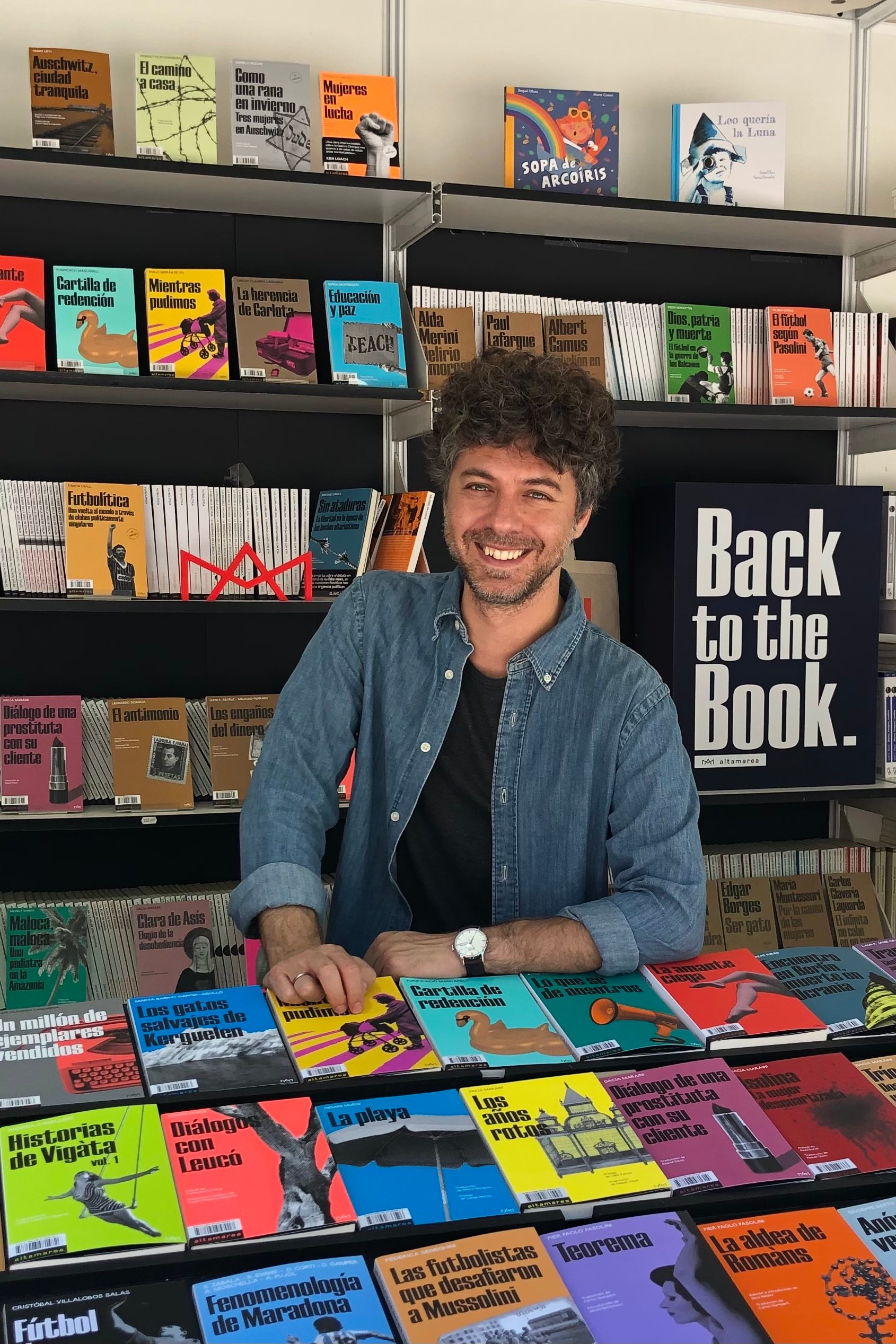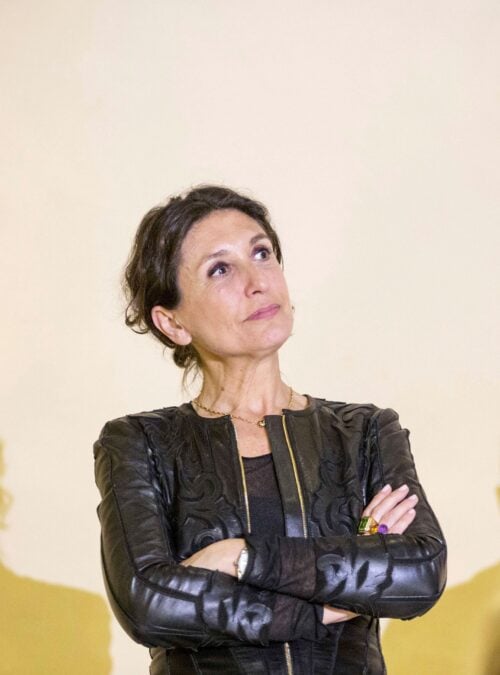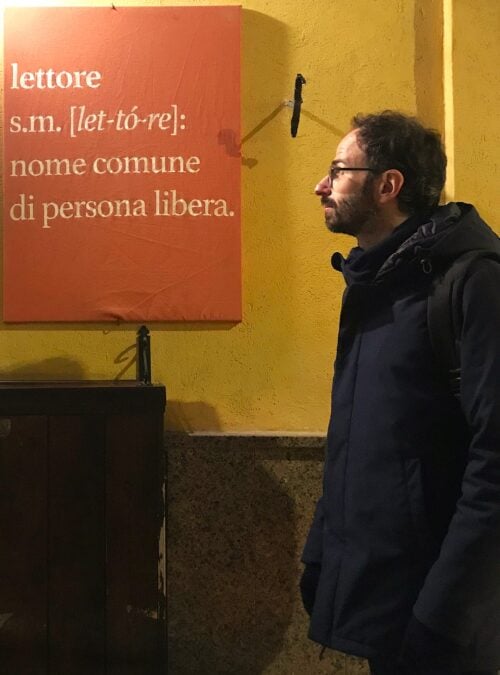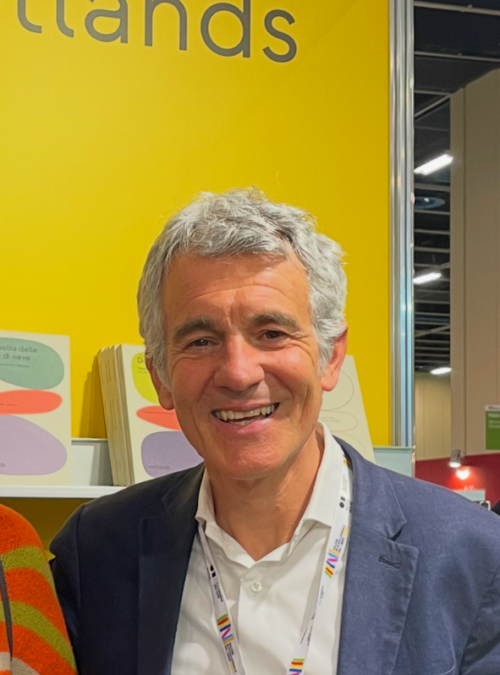Interview with publisher Giuseppe Grosso (Altamarea Editions, Madrid)
Author: Marialuisa Pappalardo, Director of the Italian Cultural Institute in Madrid

Giuseppe Grosso (1982) has been living in Spain since 2007. He studied linguistics in Milan and Pavia and philosophy at the Autonomous University of Madrid. Before founding Altamarea, he taught Italian language and literature at the Autonomous University of Madrid, worked as a translator, a correspondent for the daily newspaper Il Manifesto, and worked with various Spanish and Italian publishing houses.
Altamarea was born from Giuseppe Grosso and Alfonso Zuriaga’s desire to create a literary and cultural bridge between Spain and Italy. This ambition remains the foundation of the publishing house’s editorial strategy, which has however expanded and branched out, to include non-fiction genres and non-Italian literature. The name Altamarea was inspired by the Mediterranean Sea, which unites – but also divides – Spain and Italy, two countries that are close to each other but don’t always communicate.
When and why did you embark on this publishing adventure by founding Altamarea Ediciones?
The publishing house was founded in 2018 from an idea Alfonso Zuriaga and I both had, and was born from the convergence of our shared interest in twentieth-century Italian literature. Having worked in publishing here in Spain, I had noticed the absence of a point of reference for Italian literature, meaning a publishing house that was straightforwardly specialised in Italian fiction and could be identified by readers as such (for example, in Italy there’s the Sur publishing house for Spanish-language literature). This gave us the confidence that there was a commercial – and cultural – space for the Altamarea project.
What are the editorial lines of your catalogue and what criteria do you use to select the works you publish?
There is a collection of Italian literature which is the cornerstone of our publishing house; we have also added a collection of non-fiction – open also to authors of different nationalities – which brings together mainly essays on political and social topics (some of the authors include Chomsky, Russell, Searle, Gramsci, Montessori, etc.).
At present, the catalogue also includes a collection of Spanish-speaking authors, a collection of small-format publications from less-mainstream genres (pamphlets, theatre, correspondence, interviews, etc.), a collection of biographical and travel books, and a recently inaugurated collection dedicated to literary criticism and topics related to writing and the publishing world. We recently added to our non-fiction line with a new collection of twelve monographs dedicated to as many protagonists of modern and contemporary political thought, created in collaboration with the Salvemini Institute of Turin, and entitled Mujeres y pensamiento político (Women and political thought). We will soon publish our first graphic novel (Pasolini, by Davide Toffolo), a genre that is delivering some very interesting works, from Italian authors too.
As to our selection criteria, we have a preference for the “classics” of Italian literature (Pasolini, Pavese, Moravia, Maraini, Levi, Sciascia, interspersed with slightly more niche authors such as Berto, Sapienza, Aleramo, Vassalli, Flaiano), with sporadic forays into contemporary literature, with Cognetti and Starnone, among our next releases. In the field of non-fiction, we try to publish books that are related to current political issues or topics of social interest. But we are also keen on a rather unusual genre, that is sports literature from a social issues perspective: Fubolítica, Futból y fascismo, Dio patria y muerte. El fútbol en la guerra de los Balcanes, Fútbol y poder en la USSR, Las futbolistas que desafiaron a Mussolini, are some of the titles in this genre that we have in our catalogue.
What is the weight of Italian authors in your catalogue? Which Italian authors are best known in Spain and which, in your experience, could have a good chance of success with Spanish readers?
Italian writers are undoubtedly prevalent in our catalogue: not only in terms of number, but also and above all in terms of brand image. Italian culture from the post-war period to the end of the 1970s is particularly valued here in Spain, not least because this period of exceptional cultural turmoil in Italy coincided with the years of Franco’s obscurantism in Spain. Authors like Pasolini, Pavese, Calvino, and Levi are widely read, known and considered as references here.
Which authors can be successful here? I’d love to know! Joking aside, it’s hard to say, especially if you want to get off the big name list. In any case, it’s all relative, meaning that a book that a big publishing house would consider a flop can be a great result for an independent publisher.
What’s your relationship with digital publishing? Do you think it can facilitate distribution, including in the Latin American market?
I’d say that my relationship with digital publishing is rather cold – although we also release the vast majority of our titles in e-book format, and some as audio books. Digital publishing is potentially a good channel for distribution in Latin America, but overall its potential is not significantly reflected in fact. It’s definitely a channel to watch, but for the time being,– particularly in consideration of the type of catalogue we produce, and of our focus on the “making” of a book – paper represents the bulk of our sales volume, even in Latin America, where in the past few years we have direct distribution (in Mexico, Argentina, Chile, Uruguay and Colombia).
Your publications are very well crafted, with a “neat” and easily recognisable graphic design: is this part of a specific marketing strategy? What do you think is your distinctive feature?
Yes, our graphic design choices are part of our marketing strategy and part of our personal passion for the creation of a book as an object. From the very start, our idea was to publish “classic” literature with a modern, original visual idea. The colour-range and distinctive graphic lines (designed and developed by Spanish graphic designers Ricardo Juárez and Sara Maroto) are certainly among our distinguishing features, as well as the “Italianness” associated with the brand.
In your strategy, what are the next challenges and projects for Altamarea?
One of the challenges is undoubtedly to continue our publishing pace while maintaining the same level of quality and cultural offers. Another challenge – a rather complicated one, due also to structural issues in the Spanish-speaking countries overseas – is to increase and consolidate our presence in Latin America.
If you had to define Altamarea using three adjectives, what would they be?
Independent, modern, rigorous.










